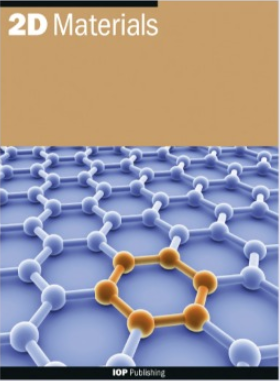A review on transfer methods of two-dimensional materials
IF 4.5
3区 材料科学
Q2 MATERIALS SCIENCE, MULTIDISCIPLINARY
引用次数: 0
Abstract
Over the years, two-dimensional (2D) materials have attracted increasing technological interest due to their unique physical, electronic, and photonic properties, making them excellent candidates for applications in electronics, nanoelectronics, optoelectronics, sensors, and modern telecommunications. Unfortunately, their development often requires special conditions and strict protocols, making it challenging to integrate them directly into devices. Some of the requirements include high temperatures, precursors, and special catalytic substrates with specific lattice parameters. Consequently, methods have been developed to transfer these materials from the growth substrates onto target substrates. These transfer techniques aim to minimize intermediate steps and minimize defects introduced into the 2D material during the process. This review focuses on the transfer techniques directly from the development substrates of 2D materials, which play a crucial role in their utilization.二维材料转移方法综述
多年来,二维(2D)材料因其独特的物理、电子和光子特性吸引了越来越多的技术兴趣,使其成为电子学、纳米电子学、光电子学、传感器和现代电信应用的绝佳候选材料。遗憾的是,它们的开发往往需要特殊的条件和严格的协议,因此将它们直接集成到设备中具有挑战性。其中一些要求包括高温、前驱体和具有特定晶格参数的特殊催化基底。因此,人们开发出了将这些材料从生长基底转移到目标基底的方法。这些转移技术旨在尽量减少中间步骤,并将过程中引入二维材料的缺陷降至最低。本综述重点介绍直接从二维材料的生长基底转移到目标基底的技术,这些技术在二维材料的利用中发挥着至关重要的作用。
本文章由计算机程序翻译,如有差异,请以英文原文为准。
求助全文
约1分钟内获得全文
求助全文
来源期刊

2D Materials
MATERIALS SCIENCE, MULTIDISCIPLINARY-
CiteScore
10.70
自引率
5.50%
发文量
138
审稿时长
1.5 months
期刊介绍:
2D Materials is a multidisciplinary, electronic-only journal devoted to publishing fundamental and applied research of the highest quality and impact covering all aspects of graphene and related two-dimensional materials.
 求助内容:
求助内容: 应助结果提醒方式:
应助结果提醒方式:


